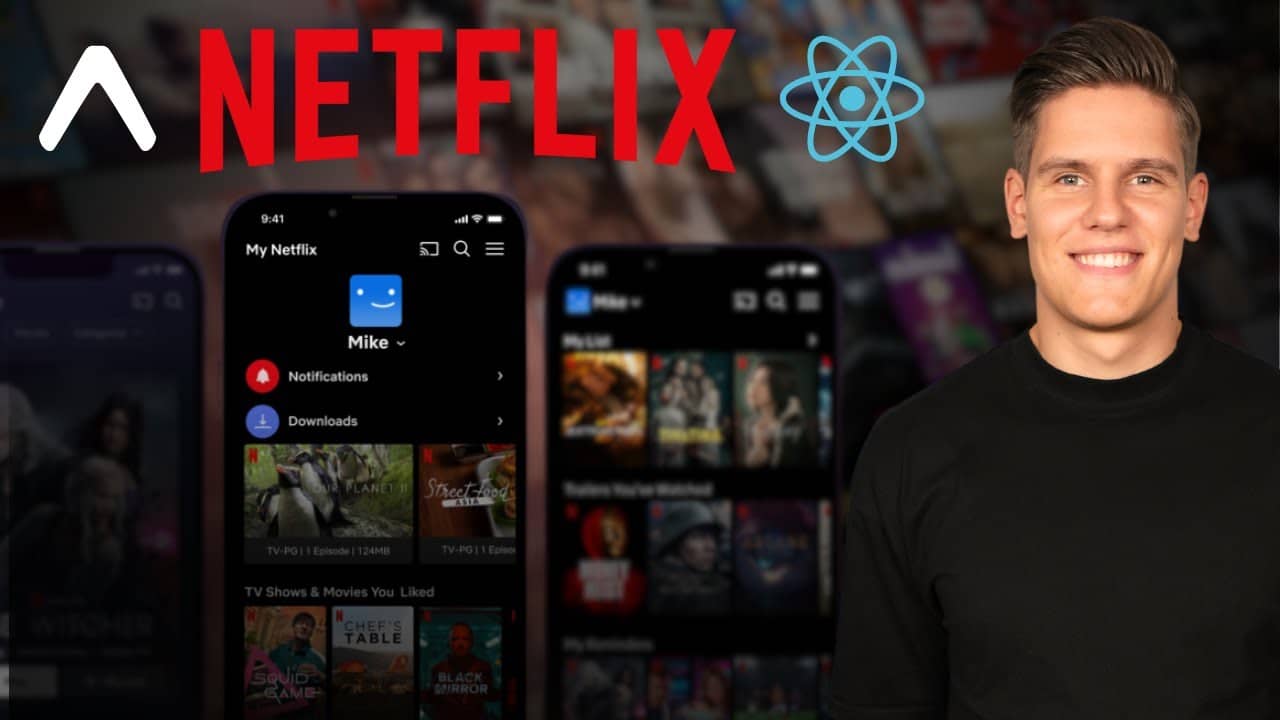Hey notJust Developers,
Ready to talk about something that could boost your app revenue? Let's dive into web checkout for mobile apps.
Today, we're covering everything you need to know about web checkout - from the basics of what it is and why you'd want it, to the exciting new opportunities Apple's recent ruling opened up. We'll walk through the pros and cons, show you how to combine web checkout with your ad campaigns for maximum impact, and break down a complete checkout flow that actually converts.
Sound good? Let's get started!
Porkbun is the domain name registrar tech professionals trust. Right now, you can get a .app or .dev domain name for under $6 for the first year to help launch your latest project or share your portfolio. Plus, the .app and .dev domains are designed to be secure. They’re on the HSTS preload list, requiring all .app and .dev websites to have an encrypted SSL connection to load, so your visitors are secure.
Get your new .app or .dev domain name for under $6 for the first year at Porkbun now.
What's Web Checkout all about?
Think of web checkout as giving your users a second door to pay for your app. Instead of only using Apple's or Google's payment system inside your app, you can also send users to a website where they can subscribe or buy stuff.
It's like having a store inside a mall (that's in-app purchases) AND your own shop across the street (that's web checkout). More options = more sales!
Why would you want this? Simple:
- Keep more money in your pocket
- Have control over your payment flow
- Minimise friction and shorten the path from ad to purchase
- Test different prices and offers
The Good and Not-So-Good Stuff
The Good Stuff 🎉
- More money for you: Skip the 15-30% fees that app stores usually take
- Your rules: Design the checkout however you want
- Flexibility: Change prices, run sales, offer discounts anytime
- Better tracking and ad attribution
- Lower churn rates: Web subscriptions are a bit trickier to cancel than one-click app store cancellations
The Not-So-Good Stuff 😕
- Extra steps: Users have to leave your app to pay
- More work: You need to build and maintain a web payment system
- Compliance headaches: Different rules for different countries
- Conversion drops: Some users might not finish the payment journey
Apple's big news (US only for now!)
Here's where it gets exciting! A recent court ruling means Apple can't stop US apps from linking to external payments anymore. They also can't charge you fees for sales that happen outside the app.
Apple is "not allowed from impeding developers' ability to communicate with users" about other purchasing options and cannot impose any commission or fee on purchases made outside the app.
What this means for you:
- US users can see buttons that say "Buy on our website for less!"
- You keep 100% of web sales (minus payment processor fees)
- Apple can't make scary warnings to scare users away
- You can be creative with how you present these options
Important: This only works for US users right now. Users from other countries still need to follow the old flow.
Web Checkout + Ads = Magic ✨
Here's a cool strategy: Run ads that send people directly to your web checkout instead of the app store. Why? Because you can:
- Offer special deals ("Get 50% off when you sign up today!")
- Collect emails before they even download your app
- Track your ad performance way better
- Keep more profit since there are no app store fees
Pro tip: This flow works even before Apple's recent ruling because it doesn't involve showing anything in the app! Smart developers have been using this trick successfully for years with their paid ad campaigns. You're not breaking any rules - you're just being clever about where you send your ad traffic.
The flow might look like: Ad → Landing page → Purchase → Download app → Already subscribed!
Your Web Checkout journey map
Let's walk through what a killer ad-to-app flow looks like using web checkout:
1. The Ad Hook
User sees your ad on social media, Google, or wherever you're running campaigns. The ad promises something specific, like "Get 50% off your first month" and sends them to your website (not the app store!).
2. Landing Page & Onboarding Flow
They land on your website where you:
- Deliver on the ad promise immediately
- Show the value of your app with demos or testimonials
- Start a simple onboarding flow with a smart questionnaire
Ask them about their needs, goals, or preferences. This helps you:
- Recommend the perfect plan for them
- Personalize their experience
- Collect valuable data for better targeting
- Build engagement before asking for money
3. Email Collection
Before showing pricing, collect their email with something like:
- "Get your personalized recommendations"
- "We'll send your special discount code"
- "Create your free account to continue"
4. The Paywall
Now show your pricing with:
- The discount from your ad
- Clear value proposition
- Social proof and testimonials
5. Download & Magic
After they subscribe:
- Show download buttons for App Store and Google Play
- Send them a welcome email with login instructions
- When they download and sign in with the same email → boom! Premium features are already unlocked
The Follow-Up Game
Here's the secret sauce: if someone doesn't purchase, you still have their email! Now you can:
- Send them better deals ("Last chance: 70% off!")
- Share success stories from other users
- Offer different plans that might fit better
- Retarget them with ads since you have their data
This flow lets you maximize every ad dollar and turn even "non-buyers" into future customers!
RevenueCat makes it easy
RevenueCat is like your payment Swiss Army knife. They handle the tricky stuff so you don't have to.
RevenueCat Web provides a set of tools that allow you to easily start selling subscriptions and one-time purchases on the web, and connect them with the same subscriptions and entitlements on mobile.
The cool part: RevenueCat Web is included in RevenueCat's price; there are no additional RevenueCat fees to support subscriptions and purchases on the web.
You just pay standard payment processing fees (around 2.9% + 30¢ with Stripe).
Expo and EAS Hosting: Perfect Partners
If you're using Expo, you're in luck! Expo and EAS Hosting make web checkout super smooth.
Why they work great together:
- Easy to deploy web pages with EAS Hosting
- Share code between your app and web checkout
- Custom domain support for a professional look
You can build your checkout page with the same React skills you use for your app, then deploy it with a single command. No need to learn new tools or platforms!
Pro tip: Want to make your checkout flow look extra professional? Grab a custom domain from porkbun and connect it to your EAS Hosting. A branded domain builds trust and makes your payment flow feel more legitimate to users. Plus, it's way easier to remember than a random hosting URL!
Ready to Get Started?
Web checkout isn't just a nice-to-have anymore - it's becoming essential, especially in the US market or in combination with paid ads. Here's your action plan:
- Start small: Test with US users first
- Use tools: Don't build everything from scratch (hello, RevenueCat!)
- A/B test: Try different flows and see what works
- Keep it simple: Don't make users jump through hoops
- Track everything: Measure conversion rates and revenue
The best part? You can offer both in-app purchases AND web checkout. Let users choose what works for them while you optimize for maximum revenue.
That's a wrap! Web checkout might seem complicated, but with the right tools and approach, it can seriously boost your app's revenue. Plus, with Apple's new rules in the US, there's never been a better time to try it.
Questions? Hit reply - I love talking about this stuff!
Happy building! 🚀
🔁 In case you missed it
 Expo SDK 54 is out! Everything that's newIn this video, we'll explore every new feature, from 10× faster iOS builds and React 19.1 support, to liquid glass UI and predictive back gestures on Android. By the end, you’ll know exactly what’s new and how to start using it in your projects. | |  Let’s Build a Netflix App in React NativeIn this tutorial, you’ll learn how to build a Netflix-style streaming app using Expo and React Native. You’ll learn how to create a modern UI with FlatList, Expo Router, and reusable components, all powered by TypeScript |
Did you learn something new today?
If you found this email valuable, forward it to one friend or coworker who can also benefit from it. That would be much appreciated 🙏
| | Vadim SavinHelping you become a better developer together with the notJust.dev team |
{{ snippet.footer-promo }}
